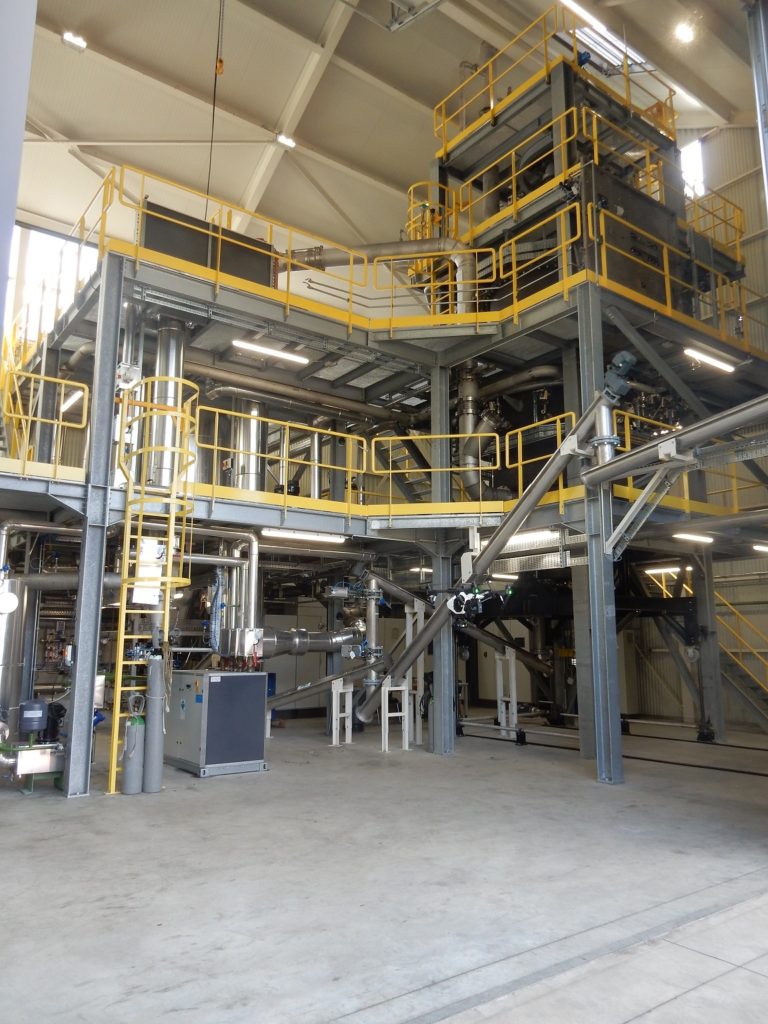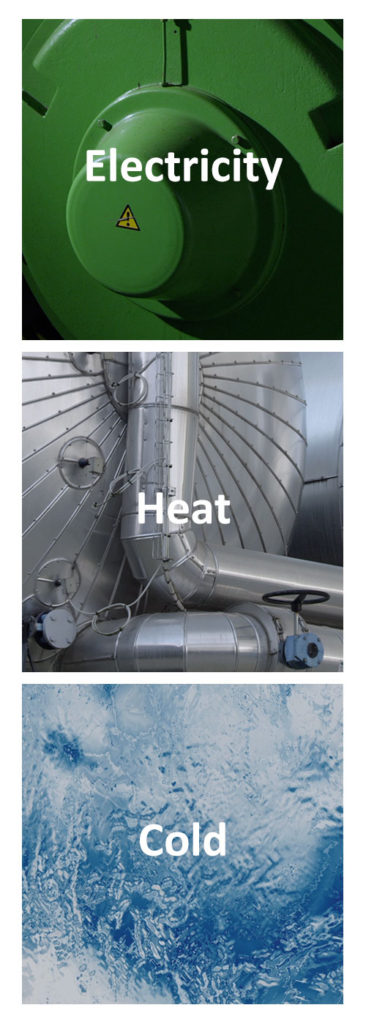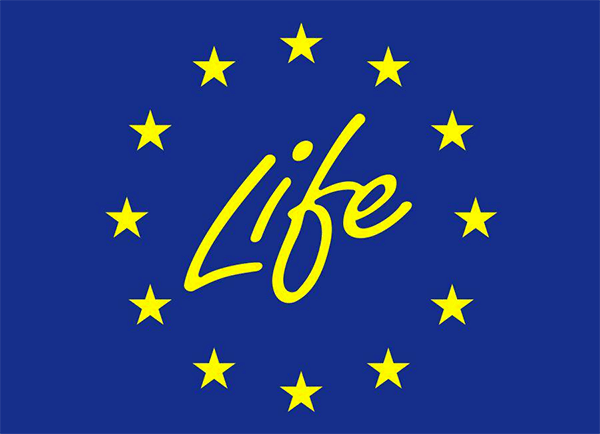
LIFE OxyUp project
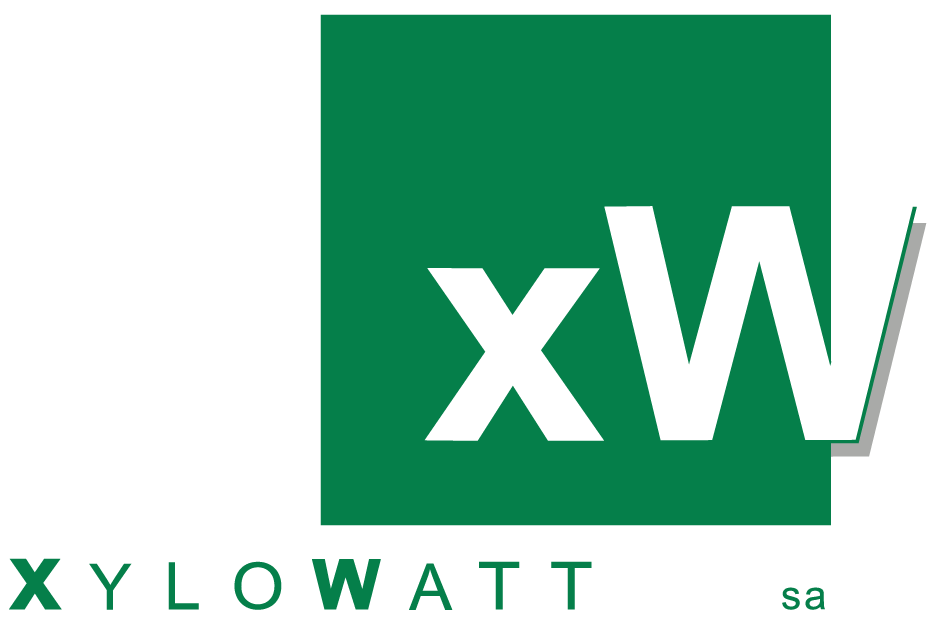
Validation stages
The LIFE OxyUp project includes three specific technical validation stages:
- Stage 1 : Upscale and validation of the NOTAR® 1.8MW pilot 100%
- Stage 2 : Industrial Application in Trigeneration 75%
- Stage 3 : Validation of the functioning of the gasification unit with various sources of biomass 75%
Stage 1 - Upscale and validation of the NOTAR® 1.8MW pilot
Objectives
Validation of the upscaled NOTAR® 1.8 Mw reactor in air-gasification mode. The NOTAR® 1.8 Mw will be designed, built and installed on Mont-Godinne site. Once built, the NOTAR® 1.8 Mw will be optimized and validated during 14 months (2600 hours of tests minimum).
Progress
The first part of Stage 1 was focused on the engineering and implementation of a NOTAR® 1.8MW air-gasifier. The design and engineering were performed by Xylowatt, in collaboration with CMI (Cockerill Maintenance & Ingénierie). CMI was selected for its industrial know-how in the specific field of biomass gasification in order to perform the “basic engineering”. The NOTAR® was built on the Mont-Godinne Hospital site in 2016-2017. The construction work ended in June 2017 and the installation was inaugurated in November 2017.
The second part of Stage 1 concerns the validation and the optimization of the NOTAR® 1.8MW pilot and is broken down into 3 steps:
- Equipment tests (I/O), cold test
- Initiation of the heat and optimization tests (300 hours over 3 months)
- Long duration test during several months
At this day, steps 1 & 2 have been successfully completed and step 3 is in progress with more than 1.000 hours running time. End date for step 3 is expected for mid-2019.
Stage 2 - Apply to the industrial applications with a cogeneration engine (CHP)
Objectives
Validation of the suitability of the syngas produced by the NOTAR® 1.8 Mw pilot for use within middle size industrial energy consumers within fully CHP integration. Various online and off-line equipment will be used to monitor efficiency and environmental impacts of the system.
These actions should lead to the validation of a more environmentally-friendly energy supply system for energy intensive industries in comparison with actual best available techniques (since based on 100% energy renewable), at similar costs. It will also offer unique solutions for bio-wastes that currently cannot be valorised so far.
Progress
The scope of Stage 2 is the industrial validation of an integrated solution producing electricity, heat and cold using a cogeneration engine, running on synthesis gas derived from the NOTAR® 1.8MW and adapted to the industrial requirements of more than 7000 hours of operation every year. This action is carried out on the Mont-Godinne Hospital site and has started with the assessment phase in December 2016.
The second step is the integration of the CHP on-site in collaboration with the CHU’s technical services and their subcontractors. Initial integration tests have begun in the second part of 2018. Full validation of the CHP integration requires at least 12 months of regular operation. Additional time must be added to the validation period regarding the necessary maintenance plan in accordance with the engine manufacturer specifications (Jenbacher).
The integration of heating and cooling (optimization of heat surplus) is expected to roll-out in 2 phases:
- With the production of thermal energy by the engine
- With the additional heat produced by the multi-fuel furnace (by-product valorisation) located on-site.
Phase 1 is expected to begin in 2019 – provided that the integration of the CHP is successfully completed – with a validation period running up till end 2019. Phase 2 is planned for the end of 2019 with a validation period running up till 2020.
Stage 3 - Validation of the functioning of the gasification unit with various sources of biomass
Objectives
The objectives set are the design, construction and validation of the FLEXI 900 gasifier with 6 different sources of bio-wastes. Three grades of WWTP sludge and three types of recycled solid biomass (B & C wood and SRF) will be tested on the FLEXI 900 for 150 hours each.
The two most promising types of bio-waste will be used for advanced optimization and long run tests of 1000 hours each to estimate the possible impact of pollutants on the durability of the gasifier. Particular attention will be given to the treatment of the syngas produced from these potentially polluted materials.
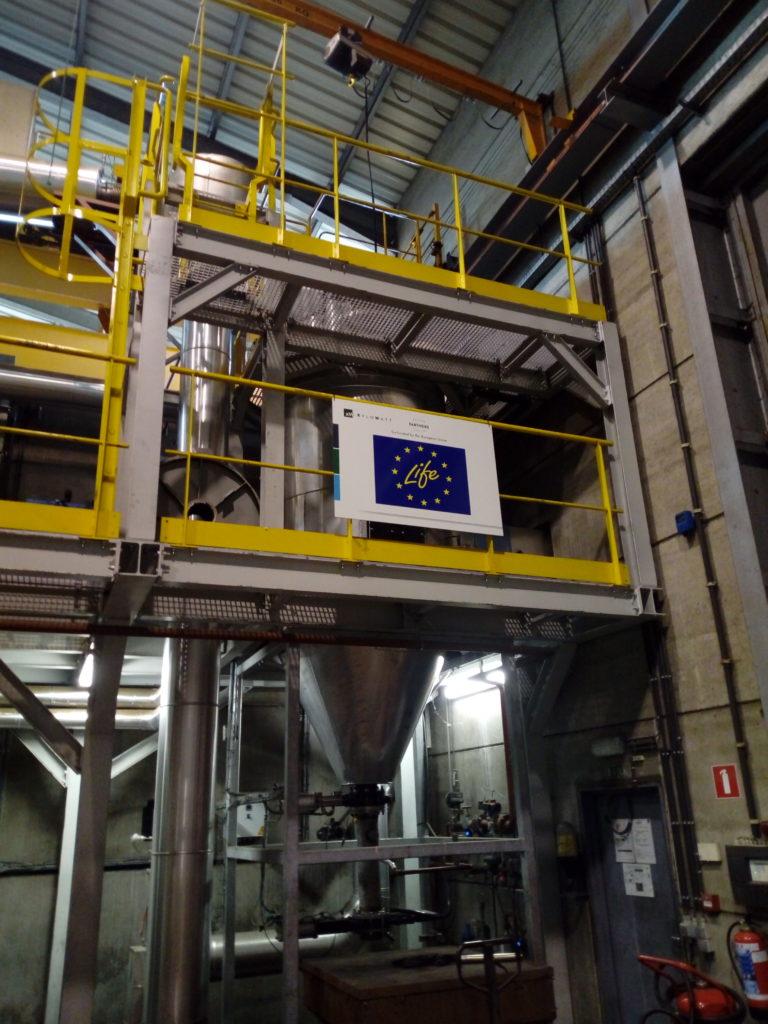 Progress
Progress
The first part of Stage 3 was implemented on the Tournai site in order to design, implement and start-up the prototype FLEXI 0.9 MW. It was designed to support different types of fuels, both in terms of functionality and maintenance.
The start-up and optimization of the FLEXI 900 gasification unit were successfully achieved in 2017, with particularly good results on the dry-GCU. The proper functioning of the dry-GCU “Stress Test” – including the launching of the gasifier and the production of clean synthesis gas without residual tars from incoming biomass – confirms the innovative and unique aspect of the gasification technology for mid-range power generation.
The second part of the action was dedicated to the evaluation of different biomass. It started in April 2015 with studies on several biomass followed by the preparation of B Wood trials. Tests were launched at the Tournai site in June 2016. This first B Wood gasification campaign with the adapted gasifier was successfully performed on the FLEXI 900 unit. In 2017, a second campaign was run with a focus on comparative testing between A and B Woods and natural gas (methane). A new campaign testing others biomass sources (as bark) is in progress. The target is to end the biomass evaluation for 2020.


